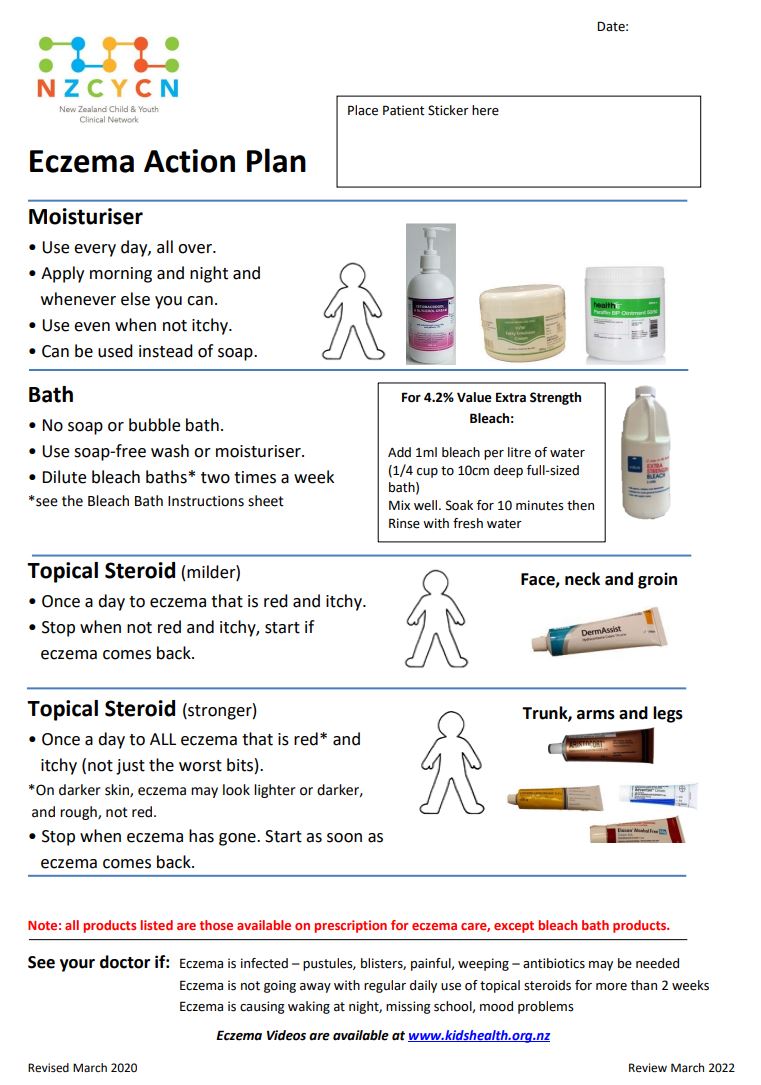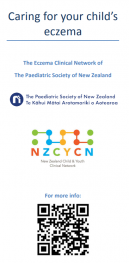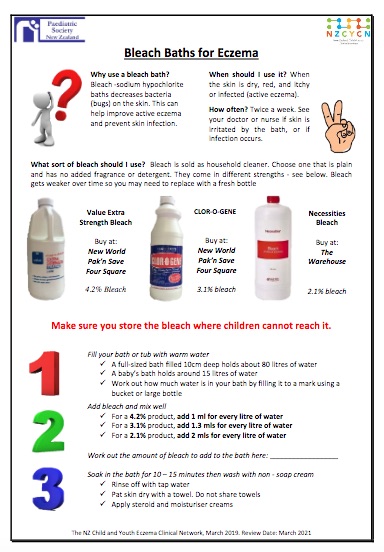You can easily manage most eczema at home but it needs care every day. There is no cure for eczema - just good management.
Avoiding triggers
Stay cool
Getting too hot from clothing or heating can make eczema worse.
Avoid soap and fragrances
Soap and fragrances are the most common triggers of eczema. Only use skin care products designed for eczema. Many are available on prescription from your doctor or nurse prescriber.
Bathing
Bathing can be really helpful for children with eczema. Bathing once a day helps to clean the skin and prepares the skin for creams after the bath.
When bathing:
- use a moisturising wash or soap substitute
- don't use soap or bubble bath
- pat the skin dry
- apply eczema creams immediately after the bath
Antiseptic baths 2 times a week can help prevent infection and improve eczema.
Moisturising
Using lots of moisturiser many times a day is really important for children with eczema.
- use it at least twice a day - more if possible
- use it all over the body, including the face
- put it on using a downward motion (in the same direction as the hairs grow)
- use a spoon to scoop out creams that come in a tub, rather than your fingers
- aim to finish at least one 500g tub every 2 to 3 weeks
Steroids
Topical steroids are steroids you put on the skin. They help to soothe inflamed eczema and allow the skin to heal and become comfortable.
- topical steroids are safe and essential for eczema care
- use topical steroids on any skin with red, itchy, active eczema - on darker skin, eczema may not look red - it may look lighter or darker, and feel rough
- put enough topical steroid on the skin that you can see a good shiny layer
- stop topical steroids when eczema has gone and start if eczema returns, but keep using moisturiser every day.









